Tunisia Travel Guide
Travel to Tunisia offers a unique opportunity to discover a rich and diverse culture, fascinating history, spectacular natural landscapes and warm hospitality. Located in North Africa, Tunisia is a crossroads of civilizations, with a history dating back to antiquity. The country is also known for its beautiful beaches, historic cities, colorful souks and delicious cuisine. Visitors can explore fascinating archaeological sites, historic mosques and churches, peaceful oases and traditional villages nestled in the mountains. Tunis, the capital of Tunisia, is a vibrant city with a UNESCO World Heritage Medina, renowned museums, delicious cuisine and a vibrant nightlife. Other popular cities to visit include Sousse, Hammamet, Kairouan and Douz.
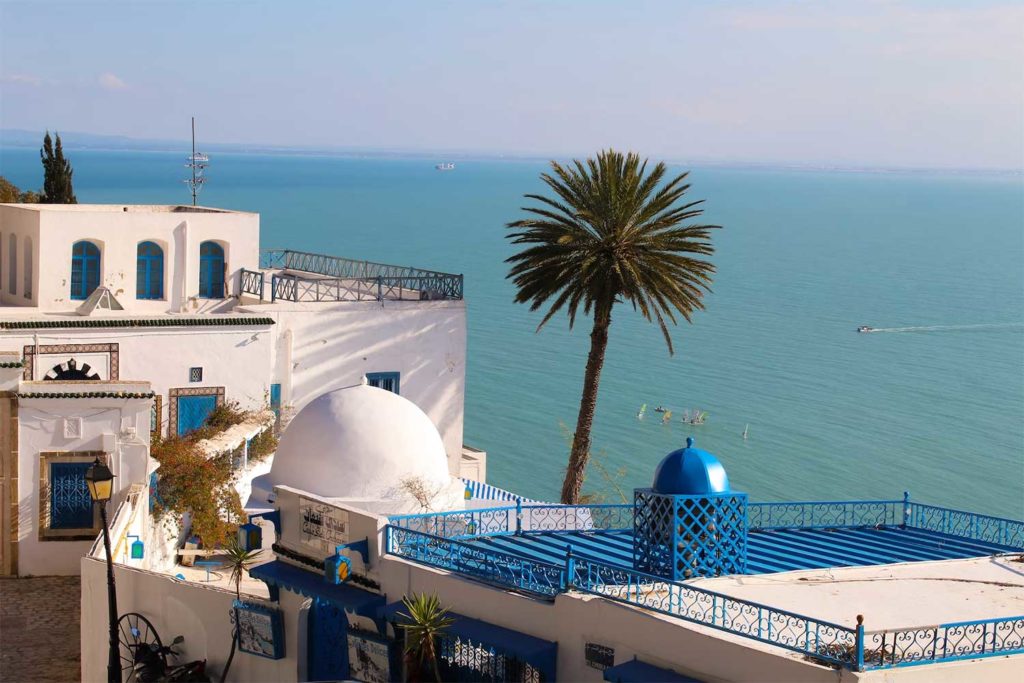
Travel to Tunisia
Tunisia occasionally offers a variety of sights that would make any traveler’s heart skip a beat. Tunisia embodies everything enticing about North Africa, from vast stretches of coastline overlooked by a jumble of cube-shaped houses to majestic historical relics and the immense, undulating dunes of the Sahara.
Discover the labyrinthine streets of Tunis’s medina, the Maghreban mosques of Kairouan, and the sparkling salt pans of Chott El Jerid. Sample freshly baked brik at a busy street market, pretend to be a Roman gladiator at El Jem’s impressive amphitheater, and mount a camel for a trek into the desert.
Tunisia was historically known as a beach destination, with a sprawling coastline on the Mediterranean Sea that left an indelible impression. Small coastal villages line the coast, where fishermen bring in the day’s catch on quiet beaches, and paved roads are adorned with colorful bougainvillea.
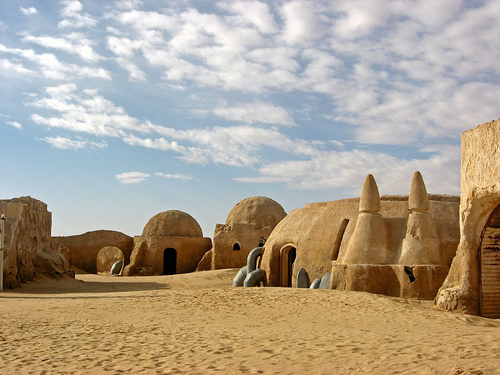
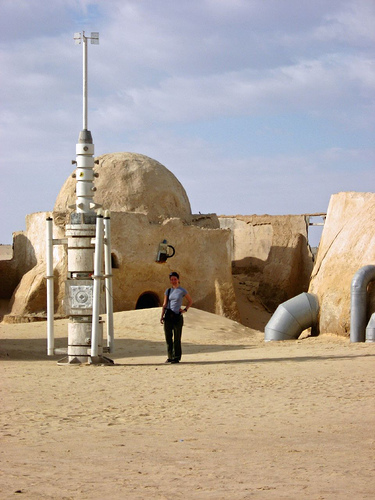
But Tunisia is much more than a place for sunbathers to spend their days lazing on the beach. After the call to prayer has ended, join the locals at a cafe for a flavored shisha while elderly men play dominoes. Scrub and steam on a marble slab beneath the tiled domes of a hammam for a unique experience. Or haggle in the souks while sipping glasses of mint tea and haggling for the best price. Needless to say, long-standing Tunisian traditions continue to thrive.
Tunisia is viewed as one of the more politically moderate nations in North Africa, skillfully balancing traditional Islamic culture with modern influences. Cities outside of the historic medina are teeming with eateries, cafes, and bars, many of which have a decidedly European flavor.
Despite recent tourism setbacks caused by a string of suicide attacks on tourists and authorities, the Tunisian government is working to improve security in major cities and tourist destinations.
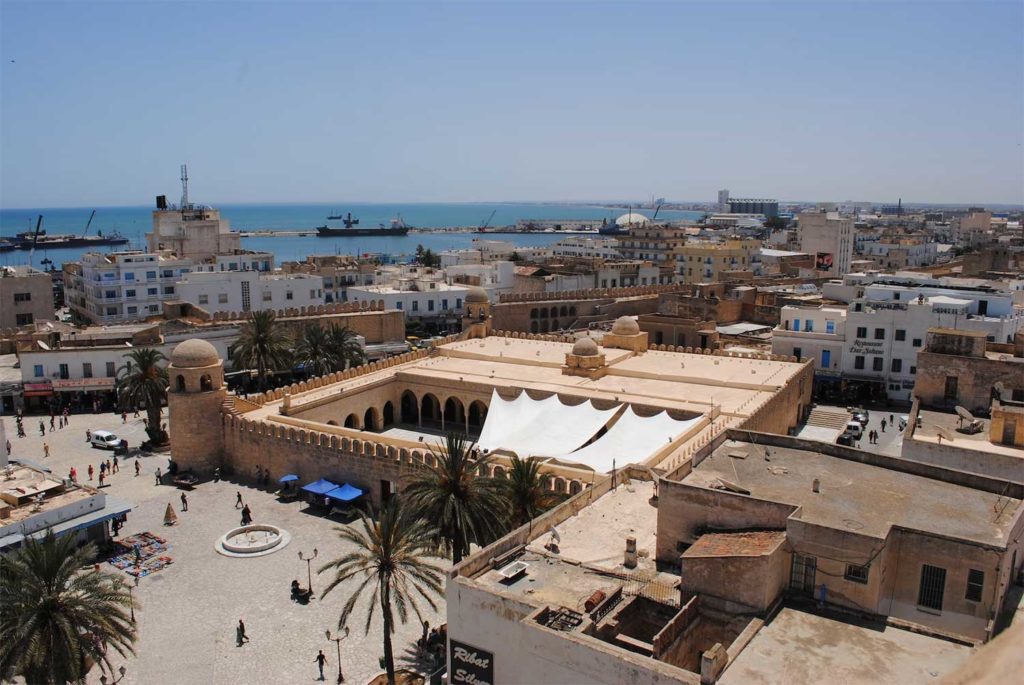
Best time to visit Tunisia
The northern regions of Tunisia, which attract a large number of tourists, occasionally experience a typical Mediterranean climate, with scorching, dry summers and mild, sometimes rainy winters. Tunisia has gained a significant share of the Mediterranean summer vacation market, alongside other destinations such as Turkey and Egypt, resulting in the months of June to August being a preferred time for seaside resorts.
Spring and fall each have their own appeal, both in terms of the pleasant weather and a reduction in tourist traffic. This is the best time to visit the desert areas of central and southern Tunisia because summer temperatures can reach sweltering levels, and the Sahara can be extremely cold at night in winter.
In Tunisia, winter is considered low season, and hotel prices often fall from December to February. There are still plenty of sunny days, but temperatures plummet after the sun sets, and it is critical to be prepared for rain.
If you’re visiting Tunis during the rainy season (December to March), bring an umbrella with you. May is a lovely month to visit, with temperatures averaging 21 degrees Celsius (70F). July and August are arid but hot, with temperatures averaging 28°C (83F).
Sousse, located on the Gulf of Hammamet, has a similar weather pattern to Tunis, but it is slightly cooler.

Required Clothing
Lightweight clothing made of natural fibers such as cotton and linen is the best option for dealing with the heat in the summer. Pack some long-sleeved tops, long pants, or skirts for off-the-beach wear unless you plan to spend your entire vacation at a resort. In the winter, you’ll need a raincoat and a warm sweater for evenings. If you’re traveling in the spring or autumn, it’s also a good idea to bring these.
Geography
Tunisia is located on the North African coast, 130 kilometers (80 miles) southwest of Sicily and 160 kilometers (100 miles) directly south of Sardinia. Tunisia is only slightly larger than 163,000 square kilometers, dwarfed by its neighbors Algeria to the west and Libya to the east. Despite its small size, Tunisia has a diverse landscape that includes cliffs on the north coast, woodland in the interior, desert, rich arable land, mountains, and salt pans below sea level.
The Mediterranean coastline is dotted with tiny islands, including Djerba in the south and Kerkennah in the east. The coastline is supported by lush pastures, orchards, vineyards, and olive groves, and it is the country’s most densely populated region.
The country’s north is becoming more mountainous, with rolling pine-clad hills dominating the landscape. As the Sahara begins to exert its influence south of Gafsa and Gabès, the central region’s countryside becomes more barren, with semi-arid plains.
Tunisia’s most famous feature is the Sahara desert region. The landscape of the south is defined by its diverse environment of vast salt pans, vast sand plains, and towering dunes interspersed with lush oases.
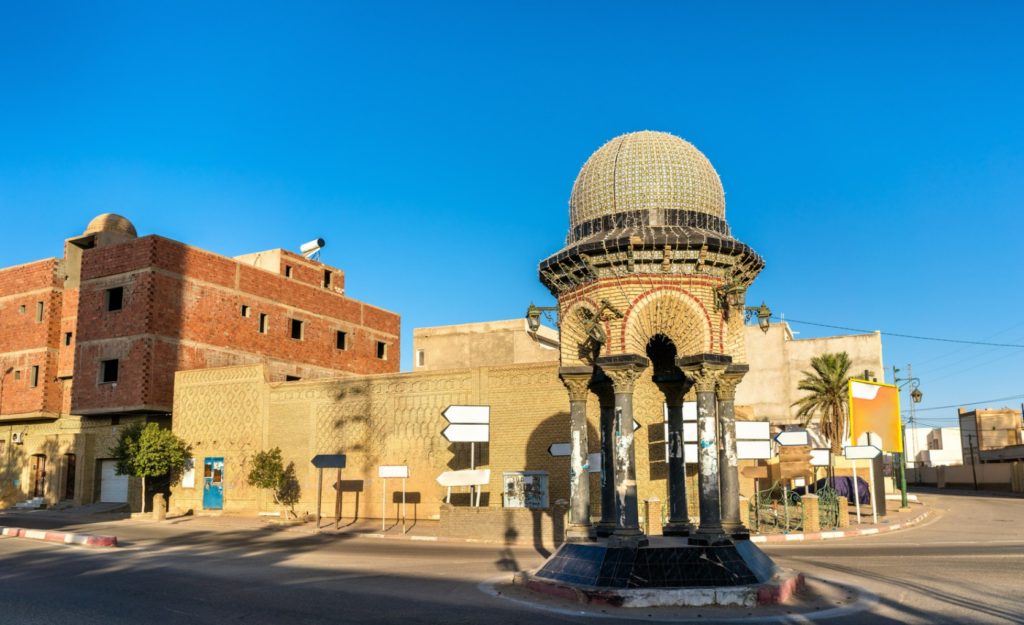
The main touristic regions in Tunisia
Tunisia is a popular tourist destination with a diverse range of regions that offer a range of cultural, natural, and historical attractions. Here is a presentation of each touristic region in Tunisia with their specificities and points of interest:
Tunis and its surroundings: Tunis is the capital city of Tunisia and offers a range of cultural and historical attractions, including the Bardo Museum, the ancient ruins of Carthage, and the Medina of Tunis. The region also offers beautiful beaches and resorts along the coast, including the popular destination of La Marsa.
Sidi Bou Said: Sidi Bou Said is a picturesque village located on a hill overlooking the Gulf of Tunis. The village is known for its blue-and-white architecture, narrow streets, and stunning sea views. Visitors can explore the village’s shops, art galleries, and cafés or take a walk to the nearby Cap Bon peninsula.
Hammamet: Hammamet is a coastal town known for its beautiful beaches, luxury resorts, and lively nightlife. Visitors can also explore the historic Medina of Hammamet or take a trip to the nearby Nabeul region, known for its ceramics and pottery.
Monastir: Monastir is a coastal town known for its beautiful beaches, golf courses, and cultural landmarks, including the Bourguiba Mausoleum and the Ribat of Monastir.


Mahdia: Mahdia is a coastal town known for its historic Medina, the Skifa Kahla fortress, and the El Jem amphitheater. Visitors can also enjoy the town’s beautiful beaches and indulge in local seafood.
Sousse: Sousse is a coastal city known for its UNESCO World Heritage site of the Medina of Sousse, the Ribat of Sousse, and the Museum of Archaeology. The city also offers beautiful beaches, water sports, and a lively nightlife.
Kairouan: Kairouan is an inland city known for its Islamic heritage and historic landmarks, including the Great Mosque of Kairouan, the Aghlabid Basins, and the Medina of Kairouan. Visitors can also explore the nearby town of El Jem and its famous amphitheater.
Tozeur: Tozeur is an oasis town located in the Sahara desert and known for its palm groves, traditional architecture, and natural hot springs. Visitors can take a tour of the nearby Chott El Jerid salt lake or the Tamerza and Chebika waterfalls.
Djerba: Djerba is an island located off the coast of Tunisia and known for its beautiful beaches, palm groves, and historic landmarks, including the El Ghriba Synagogue and the Guellala Museum. The island is also known for its traditional souks and handicrafts.

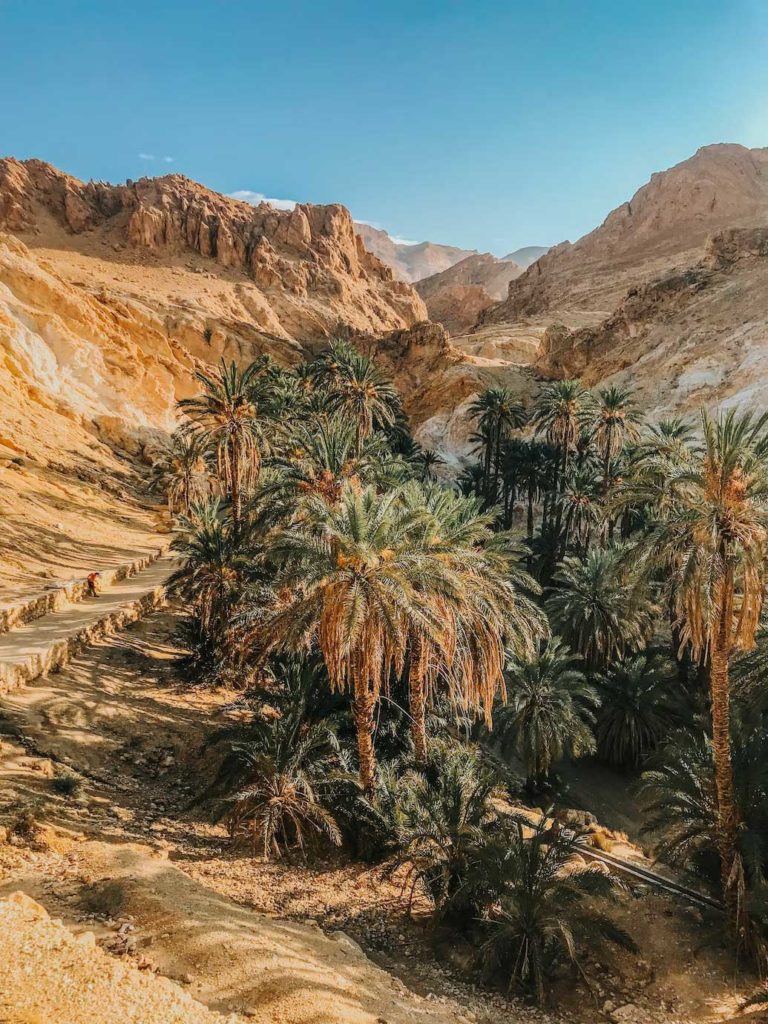
Matmata: Matmata is a small Berber town known for its unique troglodyte dwellings, which are carved into the mountainside. Visitors can explore the town’s underground homes, visit the nearby Star Wars film sets, or take a trip to the nearby Douz region, known as the “Gateway to the Sahara”.
Tabarka: Tabarka is a coastal town located in the northwest of Tunisia and is known for its beautiful beaches, scenic forests, and the 16th-century Genoese Fort. Visitors can also explore the town’s traditional souks or take a trip to the nearby Kroumirie Mountains for hiking and outdoor activities.
El Kef: El Kef is a small mountain town known for its historic landmarks, including the ancient Roman city of Dougga and the medieval fortress of Kalaat Senan.
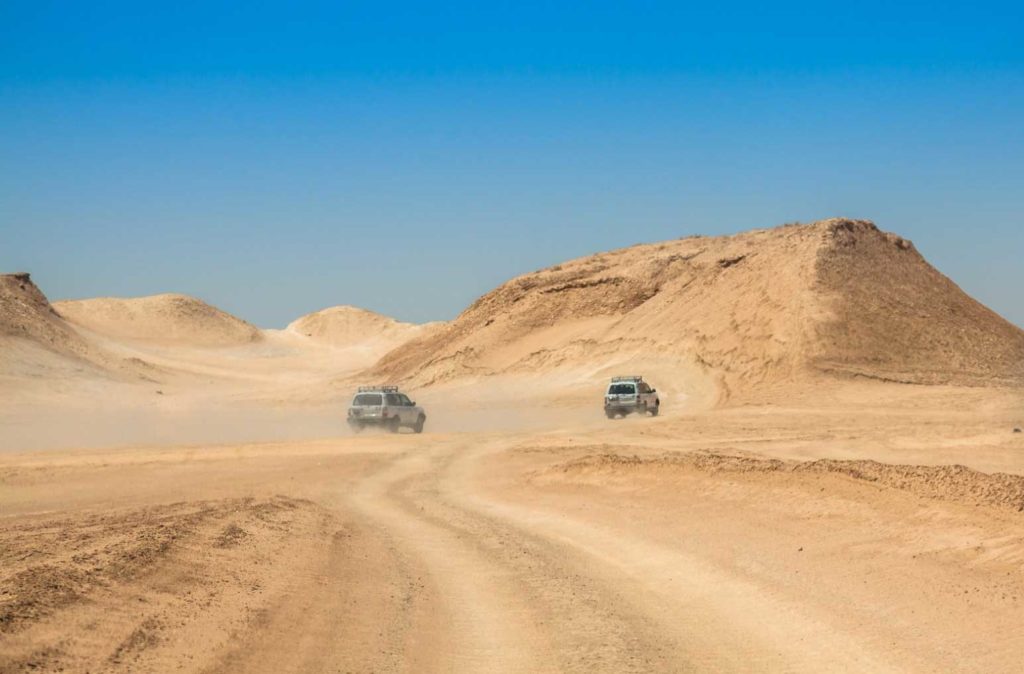
Tunisia attractions and activities
Take advantage of El-splendor. Jem’s
Tunisia’s historical high point is the El-Jem Colosseum, which is on the UNESCO World Heritage List. This massive structure, which was built in the third century and once housed up to 35,000 people, now towers over the nearby modern town. It is North Africa’s largest amphitheater, modeled after Rome’s Colosseum, and serves as a reminder of how far the Roman Empire extended, all the way to Tunisia’s heart.
Journey through sand dunes
The majestic sand dunes of the grand erg oriental spread out in waves across the horizon. The English Patient took advantage of this hypnotic setting, which has since become one of the most well-known in the Desert. From the arid outpost of Douz, you can plan camel excursions or 4×4 trips to the dunes. Rides in dune buggies and dune skiing are also available.
Investigate the Dougga ruins.
This UNESCO World Heritage Site contains some of the best-preserved ancient ruins in North Africa. Despite the fact that the majority of the still-standing structures in Dougga date from the Roman era, the town’s history dates back to the sixth century. With its majestic hilltop location and numerous monumental monuments and temples, it is one of Tunisia’s most spectacular tourist destinations.
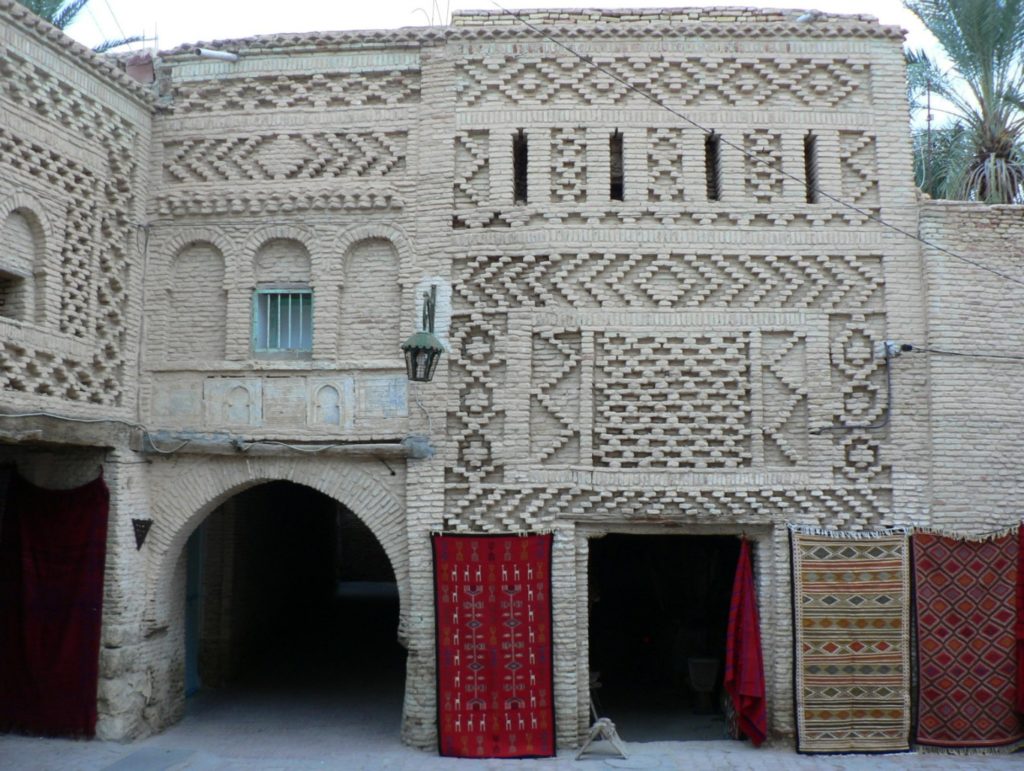
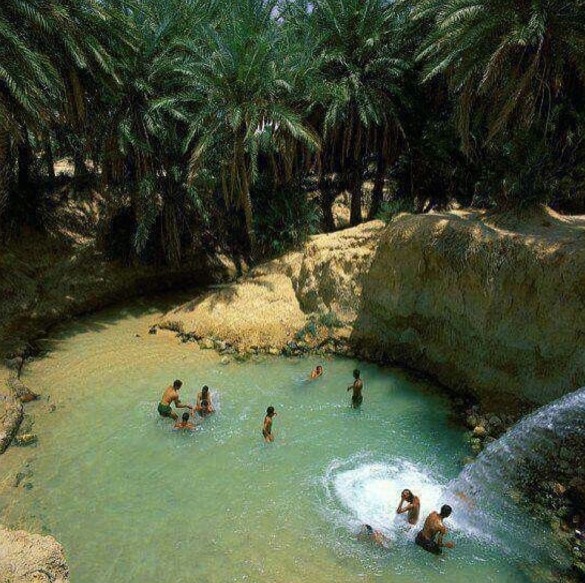
Learn more about Sidi Bou Sad.
Sidi Bou Saad is a vision of white and blue buildings atop a cliff overlooking the Mediterranean. It’s gorgeously charming and breathtakingly beautiful. Explore the village’s cobblestone lanes, then relax on the quaintly retro beach after a syrupy Arabic coffee at a cliffside cafe. A day trip from Tunis is simple.
Find the Force in Chott El Jerid.
Chott El Jerid’s salt pan, which measures 5,000 square meters (53,819 square feet), has a captivating otherworldliness that was used to great effect in the Star Wars films. In the summer, the dry salt crust blisters and shimmers, while in the winter, it floods and must be navigated by boat. The majority of visitors who visit the Chott El Jerid stay in Tozeur.
Visit Lake Ichkeul to get back in touch with nature.
The world heritage-listed Lake Ichkeul in the country’s far north is a haven for environmentalists and birdwatchers. Between December and March, when migratory species such as flamingos, egrets, and storks congregate in large numbers to spend the winter in the wetlands, is the best time to visit.
While exploring Monastir, play golf.
The lavish interior of Habib Bourguiba’s tomb, as well as Monastir’s spectacular seaside rabat, or fort, which appeared in Monty Python’s Life of Brian, are both well-known. However, with championship golf courses such as Palm Links, El Kantaoui, and the Flamingo Golf Club all nearby, the beach town is now popular with golf tourists as well.
Take in the entire Cap Bon Peninsula.
There is something for everyone on the Cap Bon Peninsula. History buffs can visit the fort in Kelibia, the ancient Roman quarry at Ghar el-Khabir, the Carthaginian ruins in Kerkouane, and the beautiful beach in El Haouaria.
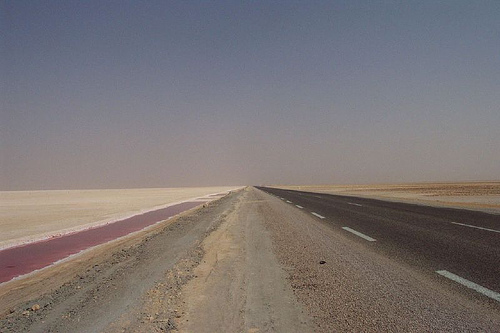
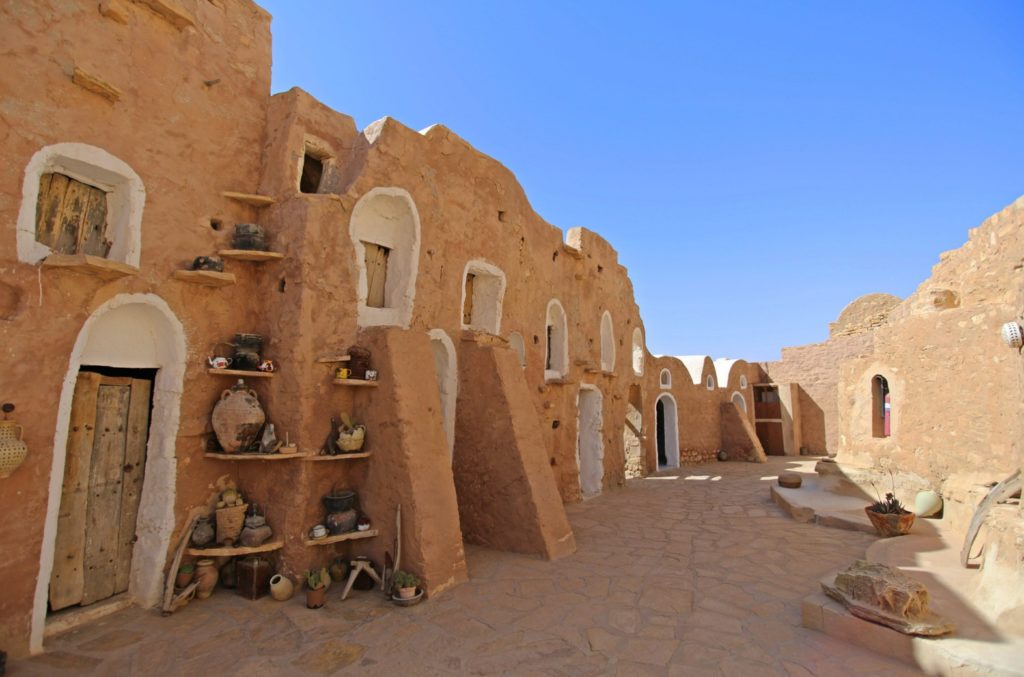
Come together at the Bardo Museum.
Terrorists attacked Bardo, one of Tunisia’s most important museums, in March 2015. A week later, it reopened (with increased security) to coincide with a large march of support through Tunis. The museum, which houses an exceptional collection of mosaics and a wide range of artifacts from various ancient locations, remains an important resource for understanding the country’s complex history.
Take in the cool atmosphere of the capital.
Tunisia’s capital is a delightful jumble of old and new, shaped over the centuries by a mix of Ottoman, Arabic, and French colonial influences. In the shadowy medina back alleyways, old men smoke shisha and play backgammon, while bright young people with laptops and cell phones fill the cafes along the modern town’s wide French-style avenues.
Steam with the locals in a hammam.
One of Tunisia’s must-do activities is a visit to a hammam, a traditional “Turkish” bath that is a cross between a public bath and a sauna, often in an opulent, old-tiled setting. The practice dates back to the Roman and Punic eras, when people were looking for natural hot springs. There are now five-star spa experiences available, but historic hammams such as El-Kachachine remain as deteriorating architectural wonders.
At Bulla Regia, you can relive the past.
Bulla Regia, a semi-subterranean Roman ruin, is one of Tunisia’s most remarkable archaeological sites. The Romans built underground structures here to escape the oppressive heat, but the unusual layout also kept the city from crumbling over time, allowing visitors to see fully intact Roman villas for the first time.
Sousse should be encouraged.
The summer of 2015 saw a terrorist attack in both Sousse and Bardo. Prior to that, it was a bustling seaside resort, particularly Boujaffar Beach with its large expanse of white sand and exciting nightlife district, but tourism has clearly suffered. Sousse, on the other hand, has a long and tenacious history dating back to the Phoenicians, when it was a significant coastal settlement. It will recover.
Take it easy, Djerba.
Djerba, with its whitewashed villages, craft markets, and palm-fringed beaches, is a slice of Mediterranean heaven. It’s a lovely place to relax, with activities limited to shopping, leisurely lunches of fresh seafood, and sunbathing on the beach.
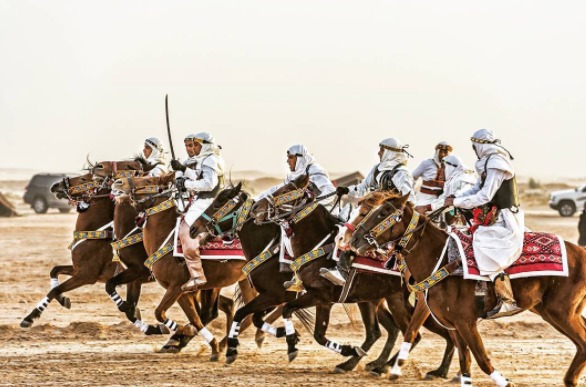
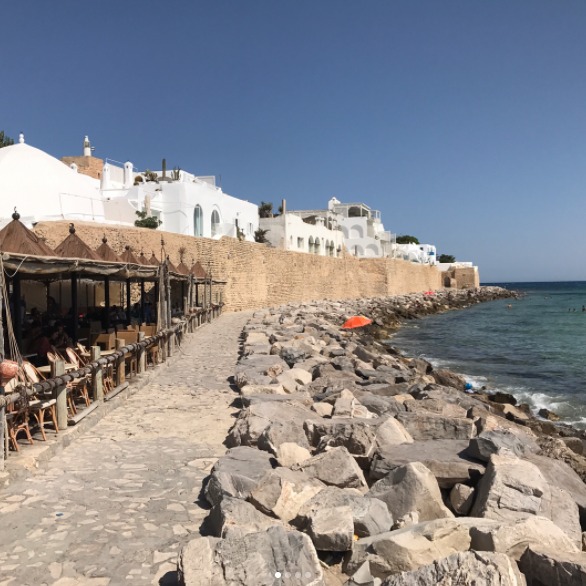
Set sail for the Sahara.
It seems a shame to visit Tunisia without seeing the stunningly bleak landscapes that make up the country’s southern half. Several companies offer Sahara excursions ranging from a short camel ride to a long journey through the desert.
Go snorkling and diving in Tabarka.
Tabarka is the best place in Tunisia for diving and snorkeling. The town itself is a slow-moving seaside town that exudes old-fashioned flair. If you need to recharge your journey energy, this is a good place to stop. Most scuba diving enthusiasts are drawn to the fascinating underwater environment of the nearby Galite Islands.
Travel to a galaxy far, far away in Matmata.
The underground homes of Matmata, first dug out by Berbers over 1,000 years ago, attract hundreds of visitors every day as a result of their significance in the first Star Wars film. The Hotel Sidi Driss, which served as the cantina in Episode IV: A New Hope and is still filled with Star Wars memorabilia, is the main draw in this area. If the mood strikes, you can even spend the night here in troglodyte fashion.
Holy Kairouan
The magnificent Grand Mosque, built in the ninth century, is just one example of the exquisite Islamic architecture that fills Kairouan’s minaret skyline. The city, which was founded in 670 at the beginning of Islam in the Maghreb, is considered the fourth holiest place in Islam. You’ll spend hours wandering around the maze-like medina, which is lined with dilapidated pastel-colored homes, in addition to seeing important sites.
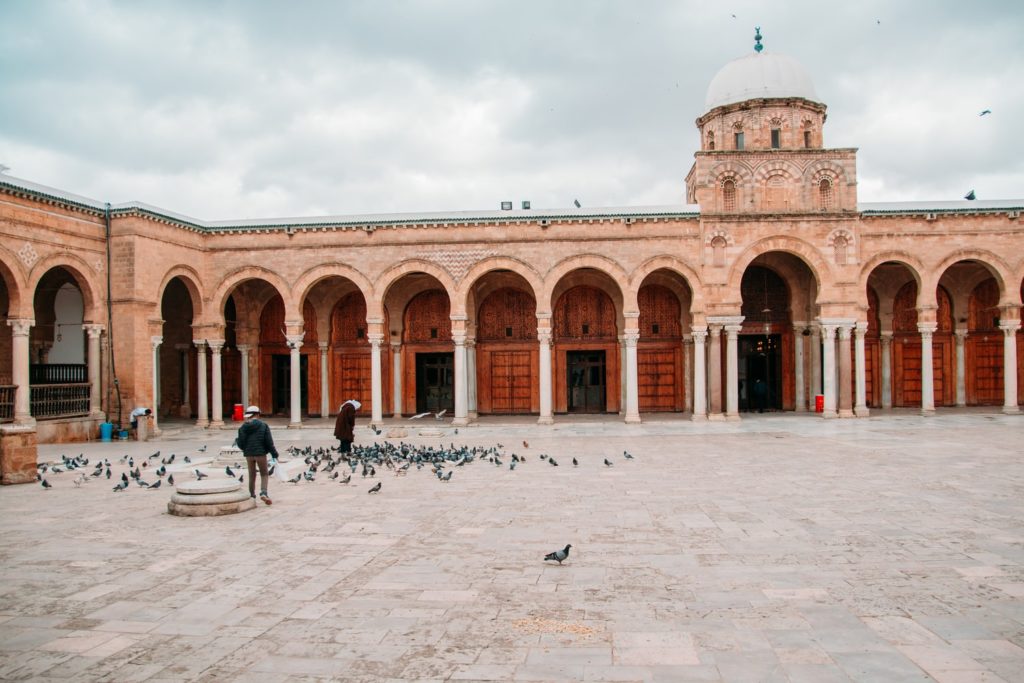
Example of a 5 day itinerary in Tunisia
Day 1: Tunis
Visit the Bardo Museum, which houses one of the largest collections of Roman mosaics in the world
Explore the ancient ruins of Carthage, which include the Roman amphitheater, the Punic ports, and the Antonine Baths
Visit the Medina of Tunis, a UNESCO World Heritage site that features narrow streets, colorful markets, and traditional architecture
Enjoy a meal at a local restaurant, where you can try traditional Tunisian dishes like couscous, brik, and harissa.
Day 2: Sidi Bou Said and Hammamet
Visit the picturesque village of Sidi Bou Said, known for its blue-and-white architecture, narrow streets, and stunning sea views
Explore the nearby Cap Bon peninsula, which features beautiful beaches and traditional fishing villages
Visit the historic Medina of Hammamet, which is home to ancient fortifications, winding streets, and traditional souks
Relax on one of Hammamet’s beautiful beaches and enjoy the Mediterranean Sea.
Day 3: Kairouan and El Jem
Visit the Great Mosque of Kairouan, one of the most important Islamic sites in Tunisia and a UNESCO World Heritage site
Explore the Aghlabid Basins, an ancient reservoir system that supplied water to the city of Kairouan
Visit the nearby town of El Jem, which is home to the famous Roman amphitheater, one of the largest and best-preserved examples of Roman architecture in the world
Enjoy a traditional Tunisian meal at a local restaurant.
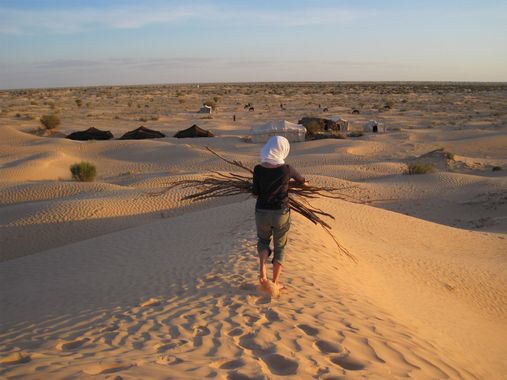
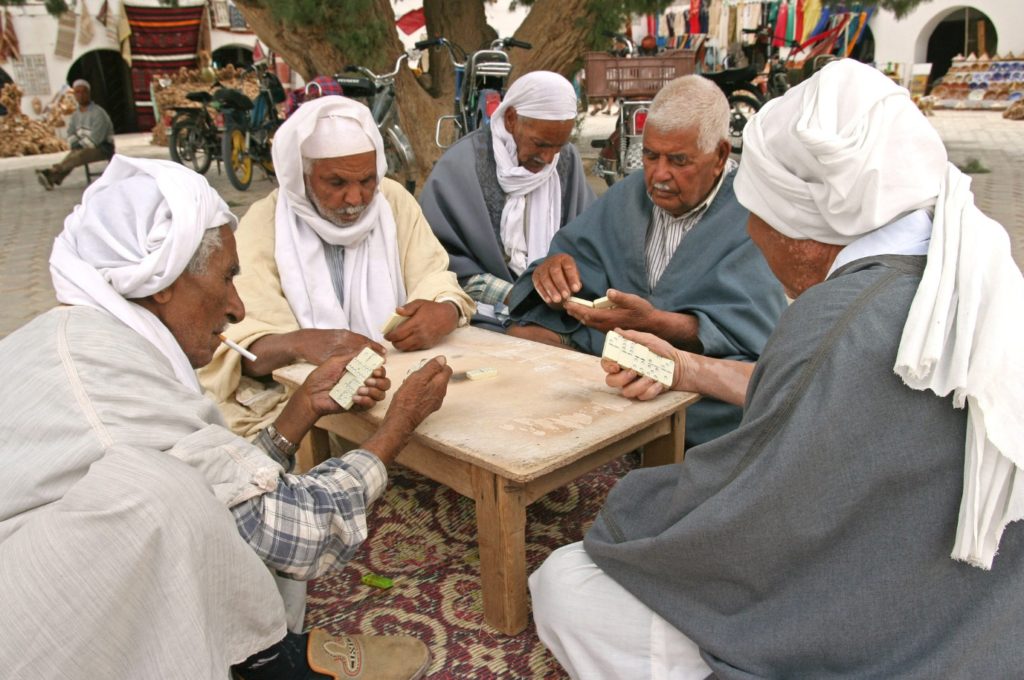
Day 4: Tozeur and Douz
Visit the oasis town of Tozeur, known for its palm groves, traditional architecture, and natural hot springs
Explore the nearby Chott El Jerid salt lake, which is the largest salt flat in the Sahara desert
Visit the town of Douz, known as the “Gateway to the Sahara,” where you can take a camel ride or dune buggy tour into the desert
Enjoy a traditional Tunisian meal at a local restaurant.
Day 5: Djerba and Matmata
Visit the island of Djerba, located off the coast of Tunisia and known for its beautiful beaches, palm groves, and historic landmarks
Visit the El Ghriba Synagogue, one of the oldest and most important Jewish pilgrimage sites in the world
Explore the small Berber town of Matmata, known for its unique troglodyte dwellings, which are carved into the mountainside
Return to Tunis and enjoy a final meal at a local restaurant before departing.
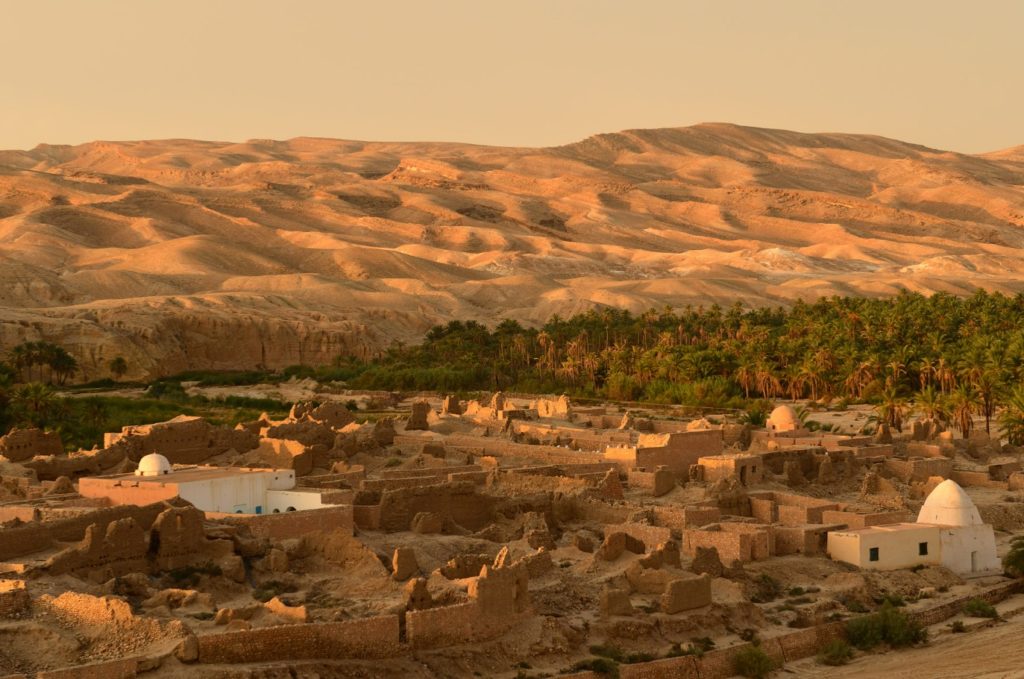
Tunisia Food and Drink
Tunisian cuisine combines elements from Arabic, Berber, European, and Middle Eastern cuisines. Dishes are seasoned with aniseed, coriander, cumin, caraway, cinnamon, or saffron, and flavored with mint, orange blossom, or rose water; many are served with harissa, a spicy chili and garlic condiment.
Fresh seafood is available along the coast, and menus in the southern Sahara region frequently feature Berber specialties, most notably rustic, hearty stews. Roast chicken and baked lamb dishes, as well as dishes with couscous, are popular across the country. Salads, which are simple and lightly dressed, are a staple of the diet all year.
If you have a sweet tooth, Tunisia will not disappoint. There is a dizzying array of Middle Eastern-style sweets and cakes to choose from, many of which are packed with nuts and drenched in honey or syrup. There are also delicious pastries left over from French rule, so expect plenty of melt-in-your-mouth croissants and pains au chocolat.

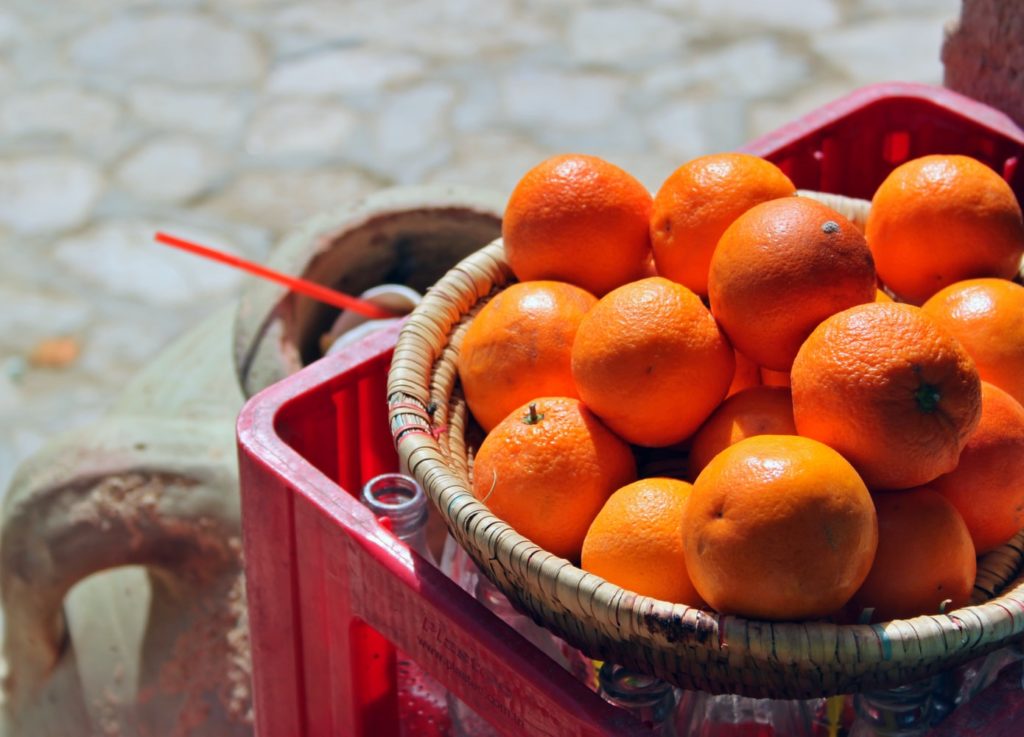
Specialities
Couscous: Ground semolina served with meat, fish or vegetable sauce.
Harissa: A hot paste derived from chillies, tomatoes, spices and olive oil.
Salade mechouia: Roasted vegetable salad, particularly peppers, sometimes topped with boiled eggs slices.
Tajine: A kind of spiced quiche, served cold, not to be confused with the Moroccan dish of the same name.
Brik: The Tunisian version of Turkish borek, a deep-fried filled pastry. Common ingredients include tuna, egg, onions, capers and parsley.
Merguez: A heavily spiced beef sausage.
Filfilmahshi: Peppers stuffed with beef and harissa.
Lablabi: Chickpea soup with lashings of garlic and cumin.
Marqa: A slow-cooked stew of meat and vegetables, particularly tomatoes and olives.
Ojja: Tunisian scrambled eggs, usually spiced with harissa, as well as tomatoes, peppers and sometimes meat.

Practical travel advice for Tunisia
Entry requirements: Visitors to Tunisia must have a valid passport and may need to obtain a visa depending on their country of origin. It’s important to check the entry requirements before traveling.
Safety: Tunisia is generally a safe country, but visitors should take normal safety precautions. Avoid carrying large amounts of cash or wearing expensive jewelry, and be aware of pickpocketing in crowded areas.
Transportation: The best way to get around Tunisia is by car or taxi. There are also public buses and trains, but they can be crowded and may not run on time. If renting a car, be sure to have an international driving permit.
Language: Arabic is the official language of Tunisia, but French is widely spoken, especially in tourist areas. English is also spoken to some extent, but less commonly.
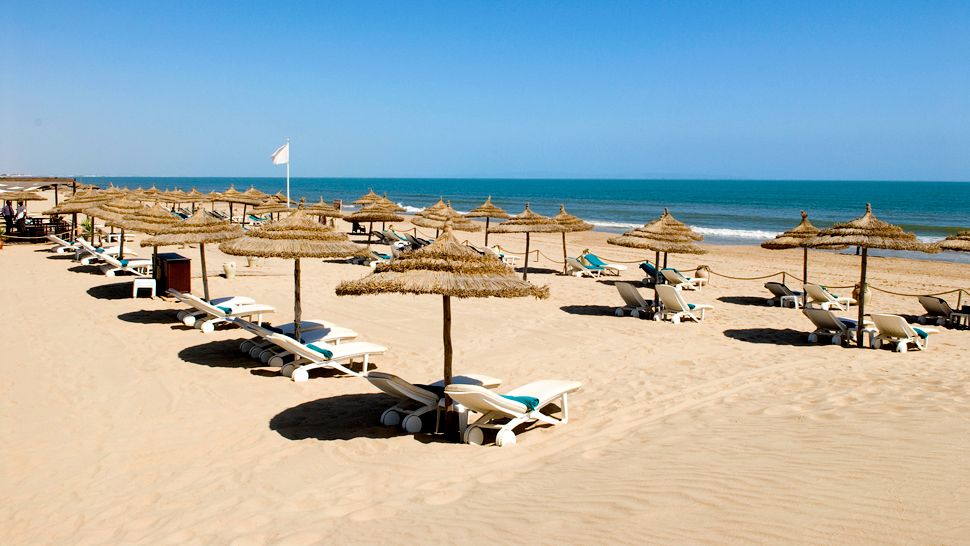

Currency: The official currency of Tunisia is the Tunisian Dinar (TND). It’s a good idea to exchange currency at a bank or authorized exchange office rather than on the street.
Weather: Tunisia has a Mediterranean climate with hot summers and mild winters. The best time to visit is in the spring or fall when the weather is mild and comfortable.
Dress code: Tunisia is a Muslim country, and visitors should dress modestly, especially when visiting religious sites. It’s also a good idea to wear comfortable clothing and shoes for walking and exploring.
Food and drink: Tunisian cuisine is a mix of Mediterranean and North African flavors, and visitors should try local specialties like couscous, brik, and harissa. It’s important to drink bottled water and avoid tap water to prevent illness.
Cultural customs: Tunisian culture is rich and diverse, and visitors should respect local customs and traditions. It’s important to ask permission before taking photos of people or religious sites, and to be mindful of cultural sensitivities.
Electrical outlets: Tunisia uses the European standard 220-240V, 50 Hz electrical outlets, with two round prongs. Visitors from other countries may need to bring a travel adapter.
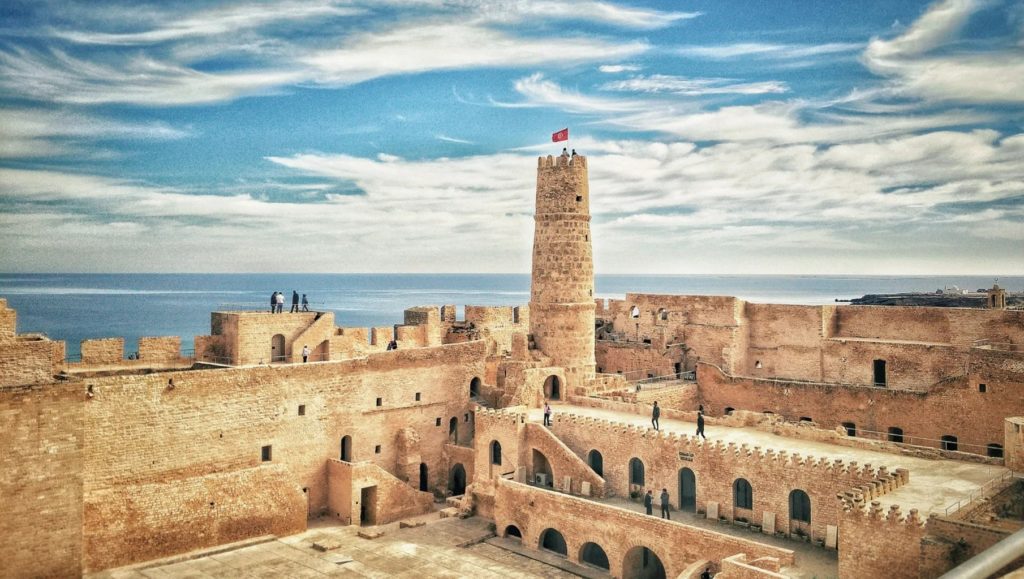
Getting around Tunisia
There are several ways to get around Tunisia, depending on your budget and travel preferences. Here are some of the best ways to get around Tunisia:
Rent a car: Renting a car is the best way to explore Tunisia at your own pace. There are several car rental companies in Tunisia, and prices are generally reasonable. However, be aware that the driving can be chaotic, and some roads may be in poor condition.
Taxi: Taxis are a convenient way to get around Tunisian cities, and fares are generally affordable. Be sure to negotiate the fare before getting in the taxi, and only use licensed taxis.
Louage: Louages are shared taxis that operate between cities in Tunisia. They are a cheap and convenient way to travel long distances, and they are often faster than public buses. Louages leave when they are full, so be prepared to wait for other passengers.
Train: Tunisia has a reliable train system that connects major cities. The trains are modern and comfortable, and fares are affordable. However, be aware that some routes may have limited schedules, especially in rural areas.
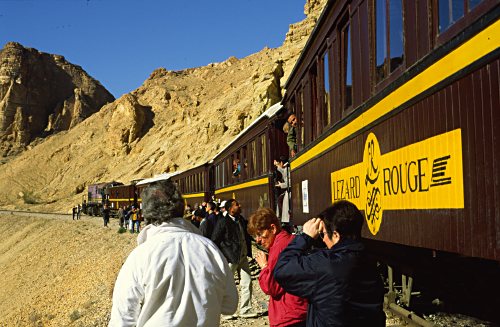

Public bus: Tunisia has a network of public buses that connect most cities and towns. They are affordable but can be crowded and uncomfortable, especially during peak travel times. It’s important to be vigilant of your belongings and avoid carrying large amounts of cash.
Walking: Walking is a great way to explore Tunisian cities and towns, especially in the historic medinas. Many cities and towns have narrow streets and alleys that are not accessible by car, making walking the best way to see the sights.
Bicycle: Bicycling is a great way to explore the Tunisian countryside and small towns. There are several bike rental companies in Tunisia, and many hotels and resorts offer bicycles to their guests. However, be aware that some roads may be in poor condition and traffic can be chaotic.

Shopping, Taxes and Tips in Tunisia
In Tunisia, there are several taxes, service charges, and tipping practices that visitors should be aware of when shopping and dining out. Here’s a breakdown of what to expect:
Value-added tax (VAT): Tunisia has a VAT of 18%, which is added to the price of most goods and services. This tax is included in the price displayed on the product or menu.
Service charge: Some restaurants and hotels in Tunisia may add a service charge of 10% to 15% to the bill. This charge is not mandatory, and visitors can choose to leave an additional tip if they receive good service.
Tipping: Tipping is not mandatory in Tunisia, but it is common to leave a small tip for good service. A tip of 5% to 10% of the total bill is appropriate, but visitors can also round up the bill to the nearest whole number as a gesture of appreciation.
Haggling: In markets and souks, it’s common to haggle over prices. Visitors should be prepared to negotiate with vendors, and it’s important to remain polite and respectful during the process.
Payment methods: In Tunisia, cash is the most common payment method, although some businesses may accept credit cards. It’s a good idea to carry small bills and coins, especially when shopping in markets and souks.
Customs regulations: Visitors should be aware of customs regulations when shopping in Tunisia. It’s important to keep receipts for any purchases, as customs officials may ask to see them when leaving the country. Visitors can bring up to 3 liters of alcohol and 200 cigarettes into Tunisia duty-free.
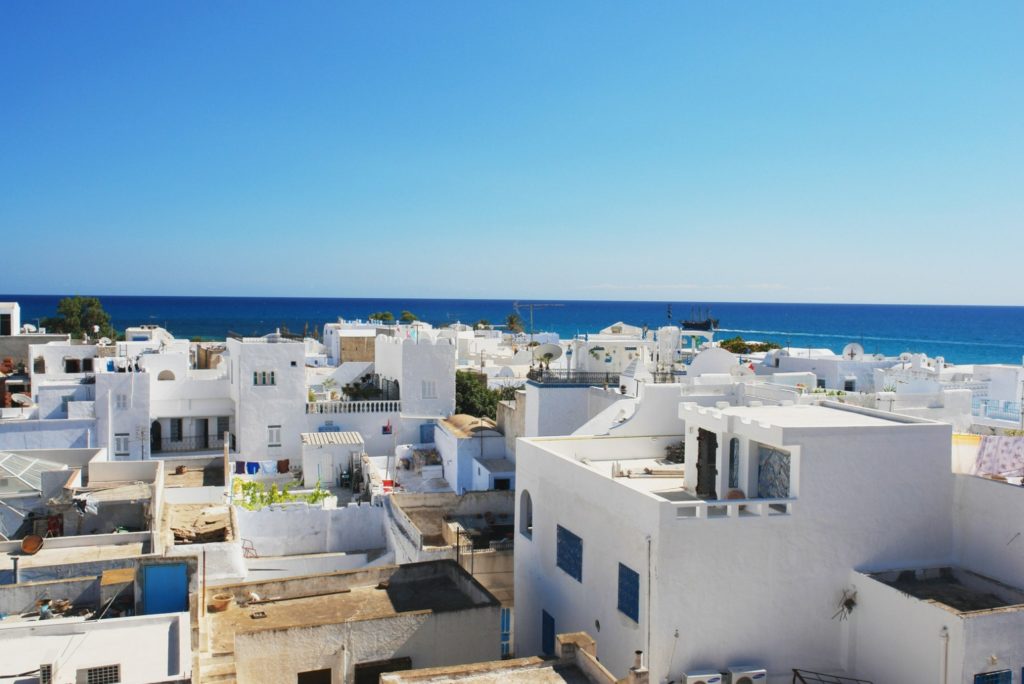
Culture and customs in Tunisia
Tunisia has a rich and diverse culture, influenced by its history as a crossroads of civilizations. Here are some of the key customs and cultural practices that visitors should be aware of:
Religion: Islam is the dominant religion in Tunisia, and many of the customs and traditions in the country are rooted in Islamic beliefs. Visitors should be respectful of local customs and dress modestly when visiting religious sites.
Greetings: Tunisians generally greet each other with a handshake and a “salam aleikum,” which means “peace be upon you.” It’s important to use the appropriate greeting based on gender, with men shaking hands with men and women shaking hands with women.
Hospitality: Tunisians are known for their hospitality and are likely to invite visitors into their homes for tea or a meal. Visitors should be respectful of these invitations and bring a small gift or token of appreciation.
Food and drink: Tunisian cuisine is a mix of Mediterranean and North African flavors, and visitors should try local specialties like couscous, brik, and harissa. It’s important to drink bottled water and avoid tap water to prevent illness.
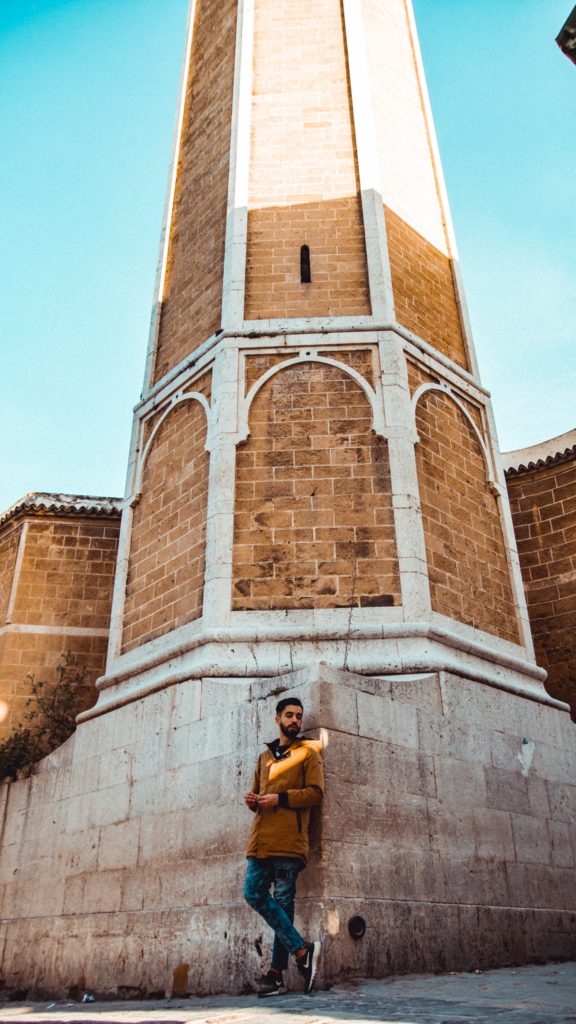

Dress code: Tunisia is a Muslim country, and visitors should dress modestly, especially when visiting religious sites. It’s also a good idea to wear comfortable clothing and shoes for walking and exploring.
Customs regulations: Visitors should be aware of customs regulations when entering and leaving Tunisia. It’s important to declare any valuable items, including electronics and jewelry, and to keep receipts for any purchases made in the country.
Social customs: Tunisians place a high value on family and social connections, and it’s common to see large extended families gathering together. Visitors should be respectful of local customs and avoid public displays of affection.
Art and music: Tunisia has a rich artistic and musical heritage, with traditional forms like the oud and qanun still popular today. Visitors can explore museums and galleries in cities like Tunis and Sousse or attend music festivals and performances throughout the country.
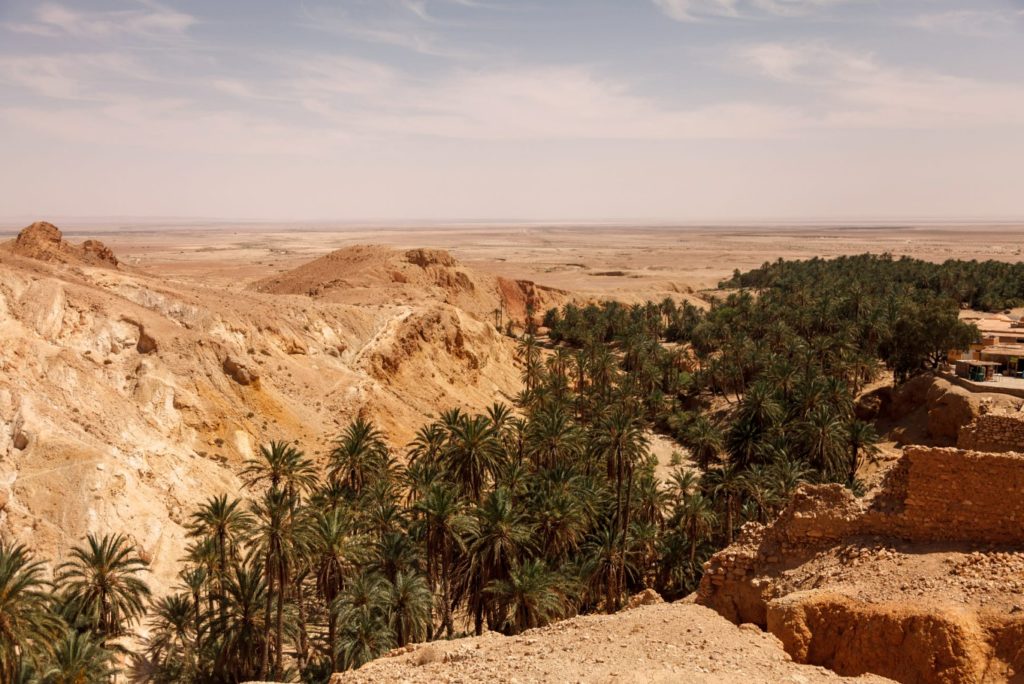
Tunisia Do’s and Dont
When travelling in Tunisia, here are some general do’s and don’ts to keep in mind:
Do:
Respect local customs and dress modestly, especially when visiting religious sites.
Bargain at markets and shops, but do so in a friendly and respectful manner.
Carry a copy of your passport and other important documents with you at all times.
Use reputable taxi companies or public transportation, especially at night.
Take precautions to avoid sunburn and dehydration, as Tunisia can be hot and dry.
Try local cuisine, such as brik and couscous, but make sure to drink only bottled or filtered water.
Don’t:
Public displays of affection are not accepted in Tunisia, so avoid kissing or hugging in public.
Do not drink tap water or use it for brushing teeth.
Do not take photos of people without their permission, especially in rural areas.
Avoid political demonstrations and protests, which can turn violent.
Do not leave your belongings unattended, especially in crowded areas.
Do not use drugs, which are strictly prohibited and can result in severe penalties.
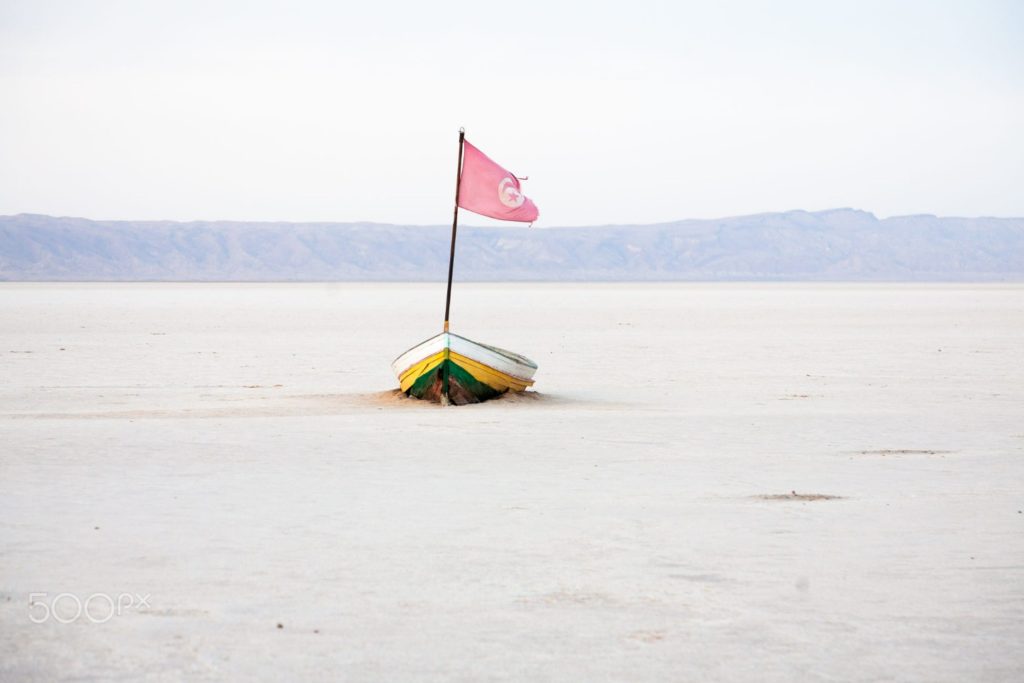
–
Check our other travel guides.